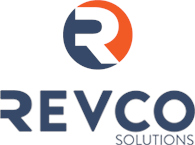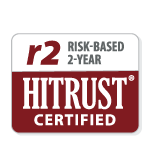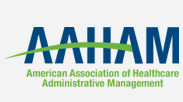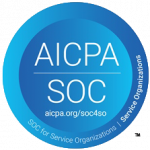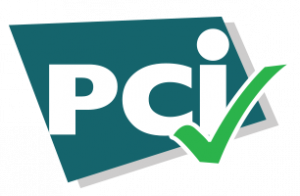Many competing definitions of revenue cycle management exist online. Some organizations divide it into five steps, others partition it into as many as 16. Fundamentally, each of these organizations is addressing the same truth: Revenue cycle management is extremely complex. Breaking the revenue cycle into smaller pieces is the best way to explore, analyze, and calibrate it.

That’s exactly what key performance indicators (KPIs) do. They turn nuanced, subjective topics — for example, the patient financial experience — into an array of objective metrics that aim to capture the majority of the topic’s nuance. By transforming the complexities of the revenue cycle into an assortment of digestible metrics, KPIs help you understand what’s working, what isn’t, and most importantly, how to optimize your RCM processes for greater financial health.
Our team at Revco has compiled the 13 metrics that are most essential to your RCM success. For each, we’ll walk through a definition of the metric, a formula you can use to calculate it, and the industry benchmark you should strive to surpass.
Let’s jump right in.
13 Crucial RCM KPIs: Definitions, Formulas, and Benchmarks
As you review these core metrics, keep in mind that they should be viewed individually and collectively.
A single KPI — for example, Right Party Contact (RPC) Rate — will tell you how often your debt collectors connect with the right person. However, to get the full picture, you should consider RPC Rate within the context of other metrics like Average Payment Per Call and Average Wait Time. This will give you a holistic, integrated view of your collection performance.
In other words, once you’ve broken down your RCM performance using KPIs, you should piece them back together to understand how they impact one another and how they impact your RCM efforts as a whole.
- Abandonment Rate
What Is Abandonment Rate?
Abandonment rate measures how frequently patients disconnect or hang up the phone before they speak to a representative.
How to Calculate Abandonment Rate
Abandonment Rate = (Number of Abandoned Calls ÷Total Incoming Calls) x 100
Abandonment Rate Benchmark
Strive for an abandonment rate that’s below 5%. While this metric depends on organization-specific factors (like location and specialty), an abandonment rate that’s above 8% should raise a red flag.
Importance of Abandonment Rate
Let’s start with the obvious: If callers hang up before they reach a representative, they won’t pay their bill, and your organization will miss out on vital cash.
Equally important, though, is the impact a high abandonment rate has on the patient experience. When a patient calls about their bill, and your representatives aren’t available to answer questions or collect payment, they begin to form a negative impression of your entire organization — and might think twice about returning for care.
- Aged Accounts Receivable (A/R) Rate
What Is Aged A/R Rate?
Accounts Receivable (A/R) include all of the payments your organization is owed by patients or payers. As time passes, these accounts are grouped into “aging buckets” at 30-day intervals, for example:
- 0-30 days
- 31-60 days
- 61-90 days
- 90+ days
Your aged A/R rate is the percentage of your A/R that falls in a specific bucket. Lower percentages (especially in the 90+ day bucket) indicate a healthier, more efficient billing cycle.
How to Calculate Aged A/R Rate
The formula you use to calculate Aged A/R rate will vary slightly depending on which “aging bucket” you’re focusing on. Here’s an example using the “90+ days” bucket.
Aged A/R (over 90) = (total A/R over 90 Days ÷ Total A/R outstanding) x 100
Aged A/R Rate Benchmark
The industry standard for aged A/R depends on which “aging bucket” you’re focusing on (among other factors). For A/R over 90 days — a must-track metric in RCM — you should aim for a rate between 10% and 15%.
Importance of Aged A/R Rate
By tracking and improving aged A/R rates, you’ll strengthen your organization’s cash flow. That means you’ll be able to invest in better people, better equipment, and better processes, and streamline your path to long-term financial health.
- Average Days in A/R
What Is Average Days in A/R?
Average Days in A/R measures how many days pass before your organization receives payment.
How to Calculate Average Days in A/R
Average Days in A/R = (Total A/R – Credit balance) ÷ Average daily charges
Average Days in A/R Benchmark
As a starting place, aim to keep your average days in A/R below 50. The most efficient billing departments produce an average of 30 days or less.
Importance of Average Days in A/R
Understanding the age of your receivables allows you to address the issues that are delaying or preventing payment. If a high percentage of your accounts are over 90 days, you may need to place a greater emphasis on collecting payment upfront or properly setting patient expectations. You can also segment aged debt based on payer, and then adjust your processes and forecasts to accommodate slow-paying insurance companies.
- Bad Debt Rate
What Is Bad Debt Rate?
Bad Debt Rate is the percentage of A/R that your organization is unable to collect. It offers a snapshot of how fully you’re being paid for the services you’re providing.
How to Calculate Bad Debt Rate
Bad Debt Rate = (Total amount of bad debt ÷ Total amount of gross charges) x 100
Bad Debt Rate Benchmark
The industry standard for bad debt is between 2% and 3% of net patient revenue. A rate that’s higher than 5% should raise alarms. While you may be able to bring your insurance bad debt rate to 0%, a small percentage of patient bad debt is unavoidable.
Importance of Bad Debt Rate
Bad debt rate is a foundational metric for RCM leaders. If your bad debt percentage is high, it means you aren’t being properly compensated for the value your organization has created. One of the best ways to combat a lofty bad debt rate is by educating your patients: helping them understand what they’ll owe and why, so they aren’t surprised when they receive a bill.
Remember: When collecting aged debt, a compassionate, collaborative approach will drive the best results.
- Claim Denial Rate
What Is Claim Denial Rate?
Claim Denial Rate is the percentage of claims denied by payers in a period.
How to Calculate Claim Denial Rate
Claim Denial Rate = (Number of denied claims in a period ÷ Total number of claims in that period) x 100
Claim Denial Rate Benchmark
The industry standard for Claim Denial Rate is 8%. A Claim Denial Rate of 5% or less will put your organization at the front of the pack.
Importance of Claim Denial Rate
At most healthcare organizations, between 5% and 15% of claims are denied on the first pass. Those percentages represent hundreds of thousands — or even millions — of dollars in lost cash.
Few RCM leaders realize that, with the proper approach, nearly 90% of claim denials are avoidable. By training your staff and implementing business analytics, you’ll reduce write-offs and propel your organization to rock-solid financial stability.
- Clean Claims Rate
What Is Cleans Claim Rate?
Cleans Claims Rate is the percentage of claims accepted by payers without edits.
How to Calculate Clean Claims Rate
Clean Claims Rate = (Number of claims accepted without edits ÷ Total number of claims submitted) x 100
Clean Claims Rate Benchmark
Your organization’s Clean Claims Rate should be higher than 95%. An elite benchmark to strive for is 98% or higher.
Importance of Clean Claims Rate
Modifying claims after they’ve been submitted doesn’t just require additional resources — it pushes payment on those claims even further down the road. By leveraging technology and rigorously training your team, you’ll minimize claim denials and catalyze your revenue cycle.
performance-driving RCM insights?
- Cost to Collect
What Is Cost to Collect?
Another foundational RCM metric, Cost to Collect reflects how much your organization spends to receive payments from patients and payers.
How to Calculate Cost to Collect
Cost to Collect = Total cost of collecting payments ÷ Total amount of payments collected
Cost to Collect Benchmark
Cost to Collect will vary based on your organization’s size, complexity, and location, as well as the age of your accounts. Generally, older accounts will have a higher Cost to Collect. Your organization should aim for maximum efficiency in your collections, so you should try to keep your Cost to Collect as low as possible.
Importance of Cost to Collect
In RCM, collecting more money while spending less is the definition of efficiency. Getting your Cost to Collect as close to $0 as possible is the best way to achieve this efficiency and gain a competitive edge. As is often the case in RCM, business analytics hold the key to optimizing your Cost to Collect (and your revenue cycle performance as a whole).
Business analytics will illuminate areas where your RCM processes are falling short and recommend high-ROI ways to improve. With respect to Cost to Collect, this might look like:
- Improving patient communications to facilitate early payment,
- Using technology to detect errors in real time and cut down on claim denials,
- Building a heat map of which CPT codes are most likely to be rejected, or
- Identifying trends that will help your organization stay ahead of changes to payer guidelines.
- Gross Collection Rate (GCR)
What Is Gross Collection Rate?
Gross Collection Rate reflects the total payments your organization collects compared to what it charges.
How to Calculate Gross Collection Rate
Gross Collection Rate = (Total payments in a period ÷ Total charges in that period) x 100
Gross Collection Rate Benchmark
The benchmark for Gross Collection Rate is 95% or higher.
Importance of Gross Collection Rate
Though this metric is worth keeping an eye on, it isn’t a great reflection of the financial health of your organization. Here’s an example that illustrates why.
Imagine that an insurance company is contractually bound to pay you $75 for a service. If you charge them $100 and you collect the agreed-upon amount of $75, your GCR is 75%. However, if you had charged only $75 because you knew they wouldn’t pay more, your GCR would be 100%.
Because GCR is arbitrary to some degree, the next metric — Net Collection Rate — is where your organization should focus its attention.
- Net Collection Rate (NCR)
What Is Net Collection Rate?
Net Collection Rate is the percentage of payment you receive compared to what payers contractually owe you.
How to Calculate Net Collection Rate
Net Collection Rate = [Total payments in a period ÷ (Total charges in that period – Contractual adjustments)] x 100
Net Collection Rate Benchmark
Your organization should aim for a Net Collection Rate of 95% or higher. If your NCR is below 90%, you should audit your billing practices to ensure that you’re receiving all of the payment you’re owed.
Importance of Net Collection Rate
Net Collection Rate is a crucial metric because it reflects how much payment you’re receiving compared to what you are eligible to collect. If your NCR is 100%, it means that you’re getting every dollar owed to you by insurance companies.
While it’s impossible to achieve a 100% NCR in practice, there are tangible steps you can take to increase your NCR: for example, reviewing your mix of payers, isolating any that are consistently underpaying, leveraging diagnostic analytics to find the root cause, and implementing a new, streamlined process for those picky payers.
- Point-of-Service (POS) Collection Rate
What Is POS Collection Rate?
POS Collection Rate is the percentage of payments your organization collects from patients at the time of service.
How to Calculate POS Collection Rate
POS Collection Rate = (Total POS payments ÷ Total charges) x 100
POS Collection Rate Benchmark
Your organization’s POS Collection Rate will vary greatly depending on contextual factors (size, services offered, location, etc.). However, a good baseline goal is to collect 35% of patient payments at the time of service.
Importance of POS Collection Rate
The benefits of a high POS Collection Rate are twofold. First, collecting payment upfront is an excellent way to bring predictable cash flow to your organization. Second, when a patient covers their bill at the time of service, they avoid the hassle of debt collection and the detrimental effects it can have on their financial well-being. Instead of associating your organization with debt collectors and a decreasing credit score, they’ll associate it with the excellent care they received.
- Resolve Rate
What Is Resolve Rate?
Resolve Rate captures how quickly you’re receiving payment for claims during a given period.
How to Calculate Resolve Rate
Resolve Rate = (Total number of claims paid in a period ÷ Total number of claims in that period) x 100
Resolve Rate Benchmark
The industry standard for resolve rate is 95% or higher.
Importance of Resolve Rate
Resolve Rate captures how effectively your RCM processes, from verification to coding to billing, are working. According to Becker’s Payer Issues, providers spend an average of 71 minutes reworking a denied claim, and appealing a denial sets the typical hospital back $118.
Improving your Resolve Rate by optimizing the efficiency of your RCM practices is the best way to preserve that time and money so you can reinvest it in better analytics and stronger care.
- Right Party Contact (RPC) Rate
What Is Right Party Contact Rate?
Right Party Contact Rate is the percentage of calls that connect to the intended recipient.
How to Calculate Right Party Contact Rate
Right Party Contact Rate = (Number of calls that reach the right recipient ÷ Total number of calls) x 100
Right Party Contact Rate Benchmark
While the benchmark for RPC Rate depends heavily on factors like your organization’s type, size, and patient mix, you should aim for an RPC Rate that’s as high as possible.
Importance of Right Party Contact Rate
To enhance your collection success, your team needs to get in touch with the right people at the right time. RPC Rate is a great indication of your team’s ability to do so. By regularly auditing your patient contact information, you’ll ensure that your collectors can connect with the intended recipient, opening the door to higher collection success rates.
- Average Payment Per Call
What Is Average Payment Per Call?
Average Payment Per Call measures how much money you receive from patients on a call-by-call basis.
How to Calculate Average Payment Per Call
Average Payment Per Call = Payments collected from calls in a period ÷ Number of calls in that period
Average Payment Per Call Benchmark
As with RPC Rate, Average Payment Per Call will fluctuate based on patient mix, age of debt, and other factors. Strive to keep this number as high as you can.
Importance of Average Payment Per Call
Average Payment Per Call goes hand-in-hand with RPC Rate to capture the effectiveness of your collection efforts. If you’re connecting with the right people (high RPC Rate) and successfully guiding them toward payment (high Average Payment Per Call), your team is doing a stellar job. If either metric is low, you know where you should invest your resources for improvement.
The Power of Revenue Cycle KPIs
Many RCM departments focus solely on the “analytical” side of KPIs. It’s easy to forget that, beneath all the numbers, formulas, and benchmarks, KPIs serve a very “human” purpose: empowering your organization to provide better care for your community. As you optimize core metrics, don’t forget that uplifting the patient by improving their financial experience is one of the best ways to set your organization up for sustainable growth.
By fine-tuning these revenue cycle metrics, you can expect to:
- Improve your financial performance. KPIs like Net Collection Rate and Average Days in A/R give you a firm understanding of your organization’s effectiveness. You can further unpack these metrics to discover where your organization shines and shed light on areas that need attention.
- Elevate the patient experience. The long-term success of your organization is driven by happy, healthy patients. If you’re consistently connecting with the right patients at the right time using metrics like Abandonment Rate and Right Party Contact Rate, you’ll enhance your patients’ financial experience and strengthen the trust your organization has built with them.
- Outpace the competition. Virtually every RCM department is using KPIs to track and increase performance — but few RCM leaders are leveraging them to their full potential. By implementing all of the essential KPIs, consistently checking in on them, and refining your strategies and processes based on what they tell you, you’ll stay two steps ahead of your competitors and lay a foundation for superior care.
Harness the Power of KPIs with Revco
At Revco, our approach is informed by richly defined KPIs. Whether we’re investigating a denied claim, walking a patient through their bill, or following up on aged debt, we proactively adjust our strategies based on data-backed insights.
Our mission is to propel you to unprecedented financial health and create an extraordinary financial experience for your patients. If you’re interested in partnering, start a conversation with us today.
